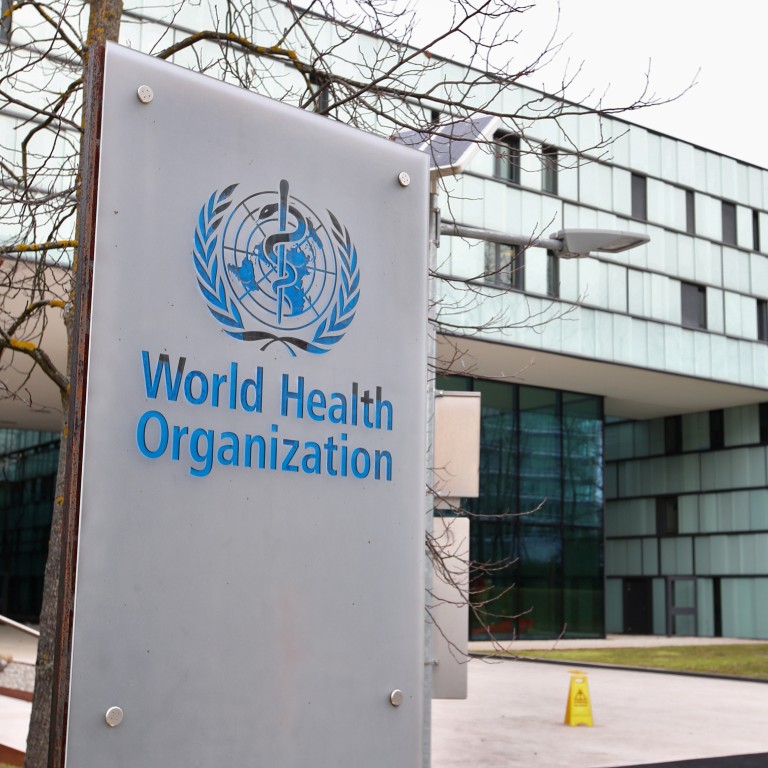
Coronavirus: Chinese samples, data can provide key to pathogen’s origin, WHO team says
- Investigation in China ‘not about finding a guilty country … [but] trying to understand what happened’, German scientist says
- WHO team has already begun discussions with scientists in China and will travel there next month
The search for the source of the pathogen has sparked claims of cover-ups and fuelled political tensions, particularly between Washington and Beijing. Most researchers think the virus originated in animals, probably bats, in China and the WHO has put together a 10-person team to examine the science.
Mission member Fabian Leendertz, a biologist at Germany’s Robert Koch Institute who specialises in emerging diseases, said the goal was to gather data to be better prepared for possible future outbreaks.
“It’s really not about finding a guilty country,” he said. “It’s about trying to understand what happened and then see if based on those data, we can try to reduce the risk in the future.”
Leendertz said on Tuesday the team had already begun discussions with scientists in China and was expected to travel there next month. They are likely to begin their work in Wuhan, where the outbreak was first reported, but a precise itinerary has not yet been set.
Leendertz, who was part of a previous mission to track down the origins of an Ebola outbreak in West Africa, said that while he “would love that to be an Indiana Jones mission” with scientists conducting groundbreaking field work, “it’s more … a team effort with Chinese colleagues to help identify the necessary next steps and how to continue”.
China set for 100 million doses of BioNTech vaccine amid roll-out of shots overseas
One of the difficulties is that those who contract Covid-19 can display a wide range of symptoms similar to flu or other diseases, or even no symptoms at all. This makes tracking the chain of infection much harder than with Ebola, which has clear and dramatic symptoms that people remember.
Leendertz said scientists would be looking to see whether stored medical samples from before the first known case provide evidence that the virus was circulating earlier than previously thought.
“Then to see where that track leads us, if it’s another city or if it stays in Wuhan or where that goes,” he said.

Another line of inquiry will be to examine the market in Wuhan that was pinpointed early on as a possible location for the leap from animal to human.
“It may also be that it was just the first mega spreading event or one of the first,” Leendertz said.
Tracking down the animal in which the virus emerged will be key, and for this the group will need to take samples of further bat species and other animals that might harbour it.
Covid-19 scientists seek the invisible in Wuhan investigation into deadly pathogen
Leendertz said the team had not been informed of any restrictions on their work in China beyond the two-week quarantine all travellers currently face. In total, the mission was expected to last four to five weeks, he said.
“There will be a report from that mission, but I’m pretty sure that [it] will not give the full answer,” he said, adding that further research was likely to be necessary.
The scientist expressed confidence in China’s “excellent researchers” and said data collected by the country’s extensive disease surveillance system would likely prove valuable.
“Also X-rays from the hospitals – we now know quite well what Covid-19 patients look like … so that could also be a hint,” he said.
“The big scope is to try to find out what happened,” Leendertz said. “How the virus jumped from which animal to perhaps an intermediate host and then to humans. To reconstruct the scenario.
“The more you know about why these spillover events happen, the better you can also check if there are countermeasures you can take to prevent such transmissions in the future.”
Speaking to reporters in Geneva on Wednesday, WHO spokesman Hedinn Halldorsson confirmed that the mission would visit China next month.
“I can confirm that this will take place in January,” he said.


.png?itok=arIb17P0)